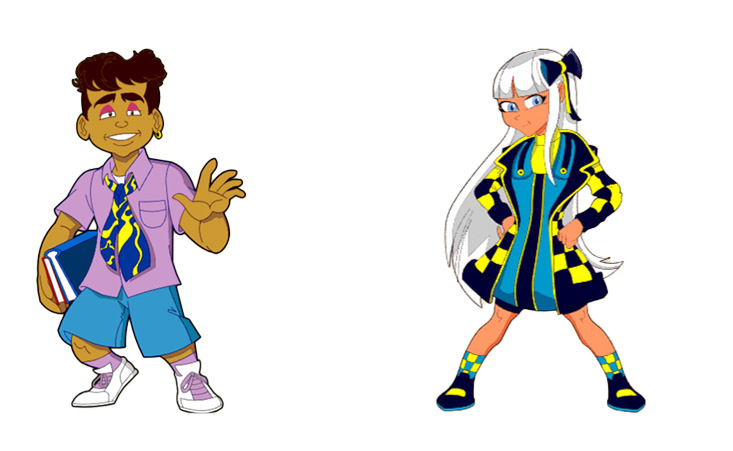3.2 Eigenschaften und Gegensätze

Hallo!
Zum Aufwärmen machen wir unseren Tagesminiplausch und eine Wiederholung.
Wiederholung
In the previous lesson, you learned characteristics that describe how a person is, specifically words that are cognates (similar to English). You also learned how you can add the prefix -un to make some adjectives the opposite. Let’s review what you have learned.
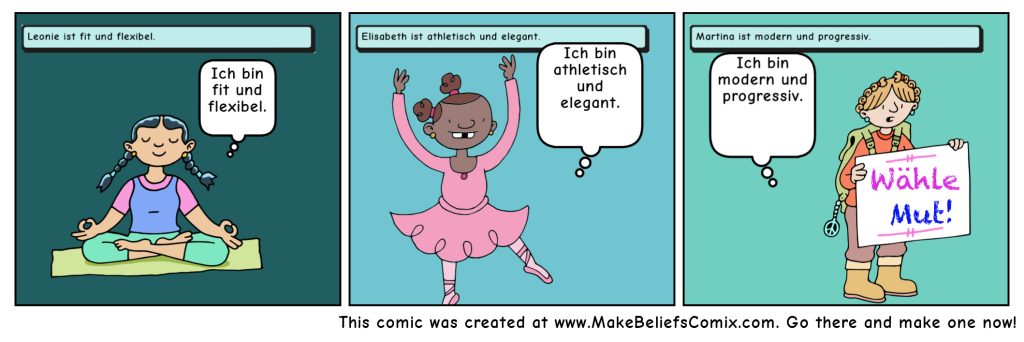
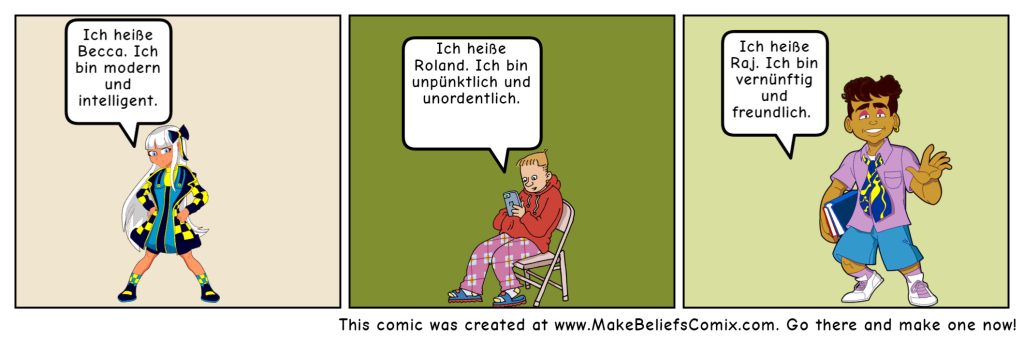
Jetzt bist du dran!
Wie bist du? What are you like? Complete the answer “Ich bin…” with words that describe you.
Lektionsüberblick
In this lesson, we will build on our work with characteristics (Eigenschaften) by introducing words that can indicate opposites. The ability to use a word like nicht (not) to make something it’s opposite can basically double your vocabulary. In the end, you will be able to 1) learn opposites of characteristics through the negation “nicht” and 2) name contrasting characteristics that describe yourself.
1) Character opposites with “nicht”
In the previous lesson, you learned that many adjectives can be negated by adding -un in front of them (e.g. pünktlich vs. unpünktlich). This happens in English too, right? (e.g. happy vs. unhappy). Similarly, English negates adjectives by placing the word “not” in front of them. Complete the activity below to see how German is similar.
Now let’s try it out.
| Das stimmt gar nicht! That’s not true!
Becca and Raj talk about themselves, but they disagree with every opinion each person has about themselves. |
|
Jetzt bist du dran!
2) Talking about contrasting characteristics
A key feature of many Märchen (fairy tales) are figures with diametrically opposed characteristics. Reading familiar Märchen in German can help you learn pairs of opposite adjectives (words that describe things).
 |
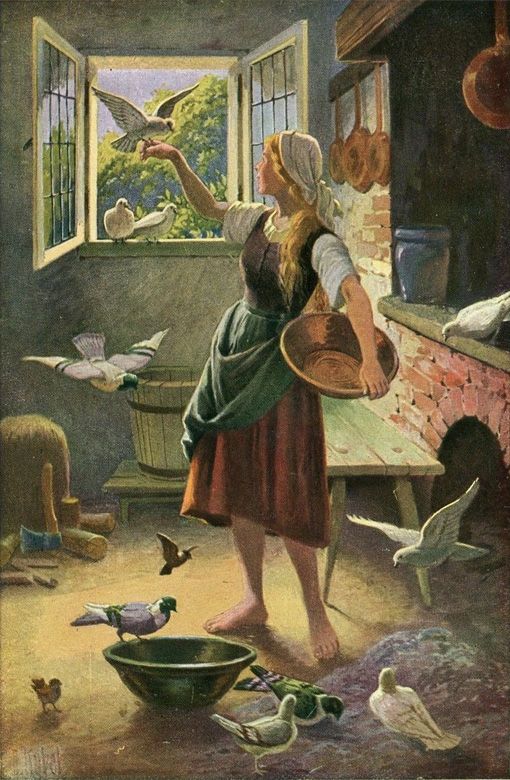
|
Read below an excerpt in English of Aschenputtel, one of the fairy tales adapted by the famous Brothers Grimm. In the excerpt, look for examples of adjectives that describe the characters in the story. Then read through the 1857 German original. Can you find the matching German adjectives?
|
|
|
Now let’s see how we can use little words like and and but to build sentences and to add contrast. Be sure to click through to each question in the question set.
Interested in the rest of the tale? Check out the full story.
Jetzt bist du dran!
Österreich im Blickpunkt: Die Linzer Grottenbahn
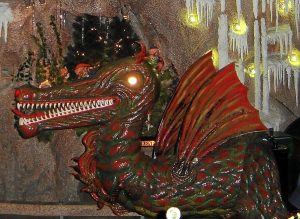
Die Linzer Grottenbahn ist eine touristische Märchenwelt in einem der Befestigungstürme in Linz. Ein elektrisch angetriebener Zug in Drachengestalt namens Lenzibald fährt durch den äußeren Ring des historischen Wehrturms.
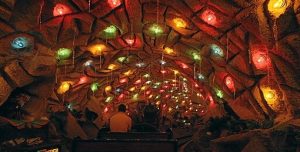
Auf der Fahrt kann man verschiedene Szenen aus bekannten Märchen sehen. Am Ende der Fahrt geht man durch eine bunte Festbeleuchtung.
Zum Schluß

*As you conclude this lesson, don’t forget to check Canvas!*

Media Attributions
- Cinderella by the Brothers Grimm in English (unnamed translator) adapted with small changes to more closely match the original German from The Project Gutenberg is under the Public Domain.
- Aschenputtel by the Brothers Grimm adapted from Wikimedia Commons is under the Public Domain.
Media Attributions
- Private: 1010-at-banner-large
- 3.1 Eigenschaften _1 comic
- 3.1 Eigenschaften _3 comic
- becca und taj

